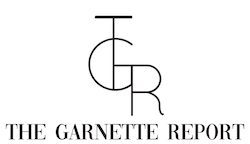
Balancing RESP Contributions with Other Financial Goals: A Guide for Young Families
Managing an RESP and other financial tasks can be overwhelming. You’re saving money for your child’s education, but what about retirement, your mortgage, or the trip you’ve promised your children for an eternity? To manage it all, you require a good, clear plan.
For many families, balancing RESPs with other responsibilities demands serious attention to detail. Quite often, it feels like they have to let go of something else to manage an RESP, but this isn’t the case if you plan wisely.
Understanding RESPs and Their Benefits
A registered education savings plan (RESP) is much more than just a savings account. It’s a smart place to park your money for your child’s future education. The best part is that the government contributes to the fund through grants, like the Canada Education Savings Grant, so you get extra money on top of what you put in, and the money grows tax-free until your child is ready to go to college.
When you need the money, you can get the principal back tax free, and the rest of the money is taxed in the hands of the student. The good thing is that since students belong to a low income bracket, the taxes they pay are minimal.
However, when choosing RESPs, be sure to start making contributions early, as it gives your money time to grow thanks to compounding. There are also government grants such as CESG and the Canada Learning Bond (CLB), which can boost the total amount. If you really get why making RESP contributions is so important, you probably have already begun thinking about juggling other goals too. Here’s what you can do.
Mortgage Payments and RESP Contributions
Dealing with mortgage payments is probably the biggest issue for young families trying to maintain an RESP account. It feels as if mortgage payments always compete with RESP contributions, especially for families already stretched thin. You can try some ways to manage things more efficiently.
When trying to maintain a balance, focus more on RESP funding first. The reason is RESPs have a shorter timeline than mortgage payments, which may be 20 years or more. You may want to accelerate mortgage payments but it gets tricky down the road and you won’t be able to fully utilize government grants like CESG which become available when you prioritize RESP contributions. Fund RESPs first and then redirect extra funds towards mortgage payments.
Similarly, if you get windfalls like tax refunds, bonuses or inheritances, aim to fund RESPs again. You should be able to hit the annual $2,500 RESP contribution limit before thinking about other long-term financial goals.
Retirement Savings Strategies and RESP Contributions
It can be hard to manage contributions to the RESP and your retirement next, but here are a few tips to help you handle things better. To start, pay off larger priorities first (like your rent), and then start thinking about how to set aside money. If your employer has a pension plan that matches contributions, utilize that as well.
Then, try to contribute to the RESP no matter how small it is to start. Use any bonuses, children’s birthday cash, and tax returns to grow those contributions over the years and top up more government grants to build your child’s education fund.
Automating the process of making RESP and retirement contributions can help make things more manageable. Your goal should be to contribute $2,500 annually to be able to receive the maximum government grant. Once you’ve set your RESP contributions, simply allocate the rest of the money to your TFSA or RRSP. Automating the process can remove any guesswork, allowing you to make consistent progress in both areas.
Finally, learn to put any tax refunds from RRSP contributions to best use. Whatever you get can be used towards RESP contributions without disturbing your regular cash flow. It may help maintain RESP growth without throwing your retirement planning off the rails.
Emergency Savings and RESP Contributions
For young families, having an emergency fund is vital. It’s a safety net to protect your RESP contributions and other long-term goals from unexpected expenses. A well-funded emergency fund means expenses like car repairs, medical bills, or last minute family trips that come without warning won’t impact your RESP or retirement plans.
Always put three to six months of living costs in easily accessible savings. Once you have that emergency fund in place, you’ll feel more comfortable adding extra money to your RESP contributions because you know there’s a buffer for surprise expenses. The strategy helps prioritize financial security, education savings, and even some small family fun as you continue to work towards your long-term goals.
Endnote
For young families on a tight budget, it’s never easy to manage RESP with the rest of their financial obligations, but with proper planning, it can be made a lot easier. Take your time, plan everything first, and stick to it to ensure you get to enjoy your life while saving enough for your child’s future education.
Photo courtesy of Freepik


